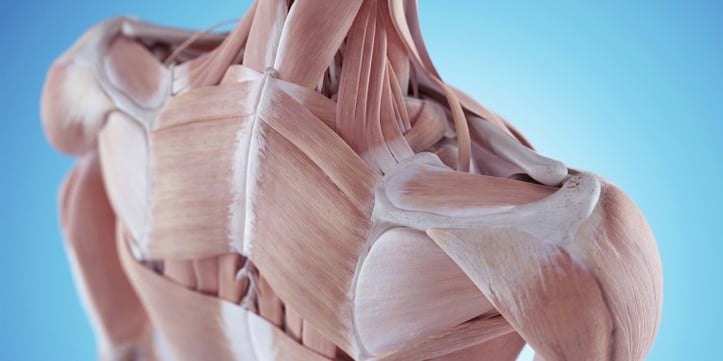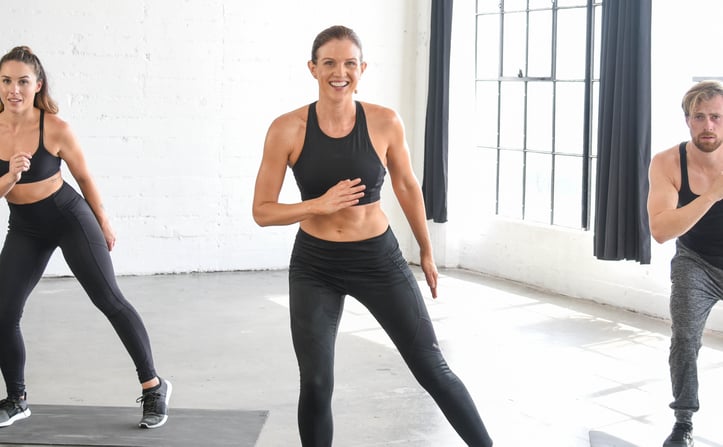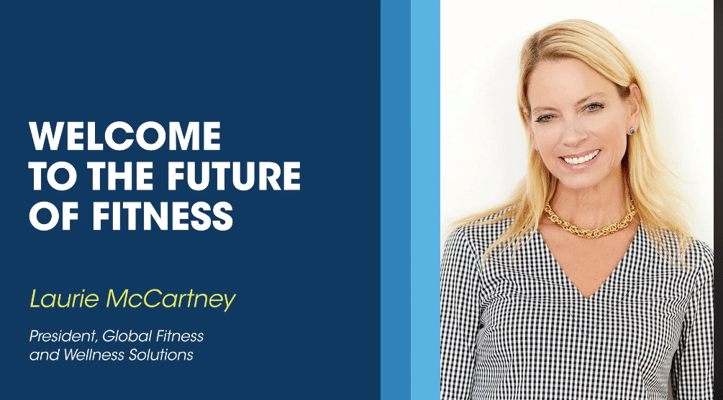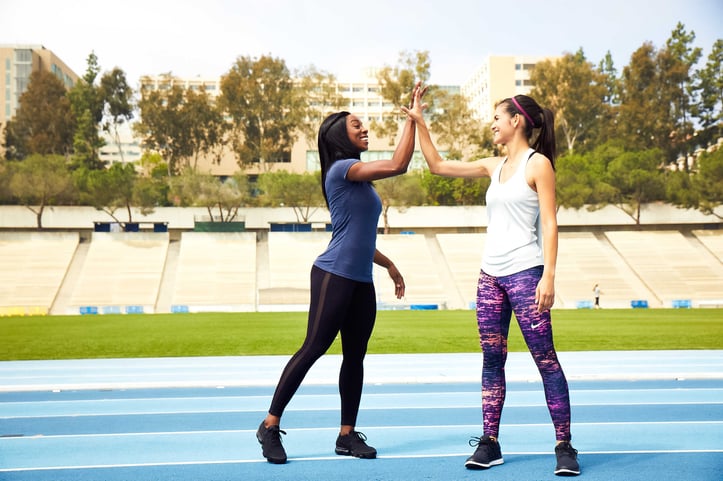A Personal Trainer’s 4-Step Blueprint to Finally Stick to Your 2025 Fitness Resolutions (And Feel Amazing Doing It!)

A Personal Trainer’s 4-Step Blueprint to Finally Stick to Your 2025 Fitness Resolutions (And Feel Amazing Doing It!)
As the calendar flips to January 1st, 2025, that familiar buzz of "new year, new me" energy electrifies the air. Gyms fill up, healthy food blogs get a surge in traffic, and aspirations are high. But let's be honest, by the time February rolls around, many of those well-intentioned gym memberships start collecting dust, and "eat cleaner" often gets postponed to "I’ll definitely start next Monday."
As a certified personal trainer who has guided hundreds of wonderful individuals through this very cycle, I’m here to share the real playbook for making your 2025 fitness resolutions stick—not with all-or-nothing pressure or quick fixes, but with sustainable, science-backed steps that build lasting change. Let's make this your year.
Step 1: Ditch Vague Goals, Adopt the 'Dual Target' Framework for Clarity and Motivation
One of the primary reasons most resolutions fizzle out is because they’re far too vague: "I want to get stronger," "I need to lose some weight," or "I'm going to exercise more." These are admirable sentiments, but they lack direction.
Instead, let's get specific using the well-regarded SMART principle (Specific, Measurable, Achievable, Relevant, Time-bound)—but with an empowering twist I call the Dual Target Framework. This involves pairing one clear outcome goal (the "what" you want to achieve in the longer term) with one or more consistent process goals (the "how" – the daily or weekly actions you'll take).
- Outcome Goal Example: "By June 30th, 2025, I aim to comfortably deadlift 1.5 times my bodyweight with good form."
- Process Goal Example: "I will attend strength training sessions three times per week, focusing on proper form over lifting the heaviest weight, and track my lifts."
Why this dual approach is a game-changer: The American Council on Exercise (ACE) has found that focusing solely on outcomes can lead to frustration and burnout, especially when progress inevitably stalls or slows. Process goals, on the other hand, keep you engaged and motivated on a daily basis because they are within your direct control.
I once had a client who initially set a goal to "Lose 10 lbs." We reframed it using the Dual Target: her outcome remained losing 10 lbs, but her process goals became "Cook 5 nutritious home meals per week" and "Take a 30-minute brisk walk after dinner on at least 4 evenings." Not only did she achieve her weight goal, but she has successfully maintained it because she built sustainable, enjoyable habits she could stick with long-term.
Step 2: Build 'Micro-Wins' to Rewire Your Brain for Consistent Success
Habits, especially new healthy ones, stick when they feel easy and rewarding to implement. This is why I passionately coach my clients to start with micro-commitments—actions so small, so manageable, that they feel almost impossible to skip, even on your busiest or least motivated days.
- Think incredibly small to start: "I will do 5 bodyweight squats before I brush my teeth each morning," or "I will pack one extra vegetable snack for work each day," or "I will drink one full glass of water as soon as I wake up."
Research from University College London suggests that, on average, it takes around 66 days (not the often-quoted 21!) for a new habit to become truly automatic. Micro-wins are powerful because they tap into your brain’s dopamine system – each small success provides a little hit of this "feel-good" neurotransmitter, reinforcing the behavior and making you more likely to repeat it.
One client began with a micro-commitment of "5 minutes of foam rolling immediately after work." Within three months, this small act had naturally evolved into consistent 20-minute mobility sessions, and she reported feeling more prepared for, and consistent in, her main workouts. It all started with just 5 minutes!
Step 3: Track Your Progress (But Look Far Beyond Just the Scale!)
The number one mistake I see people make when trying to stick to fitness goals? Relying solely on the bathroom scale or the mirror for feedback. These can be useful tools, but they only tell a tiny part of your progress story and can be incredibly misleading or demotivating at times.
Instead, I encourage you to adopt a multidimensional tracking system that celebrates all facets of your journey:
- Performance Metrics: Can you do one more push-up this week than last? Can you hold a plank for 10 seconds longer? Did you run for 30 seconds longer without stopping? These are tangible signs of increasing strength and endurance.
- Subjective Data (How You Feel): Rate your energy levels, sleep quality, mood, or stress levels after your workouts or at the end of the day. You can use a free app like Strong (for workout logging), a simple journal, or even just a note on your phone.
- Biometrics (Beyond Weight): Consider tracking things like waist circumference, resting heart rate (a great indicator of improving cardiovascular fitness), or simply how your clothes are fitting. These often provide more telling and encouraging feedback than weight alone.
The National Academy of Sports Medicine (NASM) emphasizes that tracking effort and consistency (e.g., "I showed up for my planned walk even when I was tired and it was drizzling") builds incredible mental resilience. I challenge my clients to log 3 non-scale wins (NSWs) each week. This simple practice powerfully shifts the focus from a pursuit of perfection to an appreciation of ongoing progress and effort.
Step 4: Plan for 'Resistance Days' and Imperfection (Because They Will Happen, and That's Okay!)
Life is beautifully, and sometimes frustratingly, unpredictable. A late meeting at work, a sick child, an unexpected visitor, or simply a day where you’re just not feeling it – these "resistance days" are inevitable. The final, crucial step to making your resolutions stick is anticipating these setbacks and having a compassionate plan.
Ask yourself proactively:
- "What’s my flexible backup plan if I miss a scheduled workout?" (Perhaps: "I’ll aim for 10 minutes of stretching before bed and a 15-minute brisk walk during my lunch break the next day.")
- "How will I approach a weekend of social events or holiday indulgence without derailing my progress entirely?" (Perhaps: "I’ll enjoy the occasion mindfully, prioritize hydration, and get right back to my balanced eating and movement routine with my very next meal or opportunity.")
Harvard Health powerfully notes that self-compassion—treating setbacks as learning moments and opportunities for adjustment, rather than as failures—is absolutely key to long-term success and adherence. One of my long-term clients now humorously refers to these off-days as her "glitch days" instead of beating herself up over them; she’s successfully maintained her healthy routine for over 18 months straight, through all of life's ups and downs.
Your 2025 Action Plan: Don't Wait for Perfect, Start Today
You don’t need a flawless, iron-clad plan to succeed. What you truly need is a consistent, compassionate, and adaptable one. Here’s how you can begin, right now:
- Define Your Dual Target: Grab a piece of paper or open a note on your phone. Write down 1 clear outcome goal for the next few months (e.g., "Run a 5K race by October 2025") and 1-2 process goals to support it (e.g., "I will follow my 5K training plan, completing 3 scheduled runs per week, focusing on consistent pacing for 20-30 minutes each session").
- Pick 1 Micro-Habit: Choose one incredibly small, positive action (5 squats while the kettle boils? A veggie with your lunch? Parking further away from the store entrance?) and commit to doing it every single day this week.
- Log Your Wins: Get a notebook or use an app and, each evening this week, jot down 1 non-scale win or something you’re proud of related to your health and fitness journey.
Remember, transforming your health and fitness isn’t a sprint to a finish line; it’s a lifelong, rewarding journey of self-discovery and empowerment. This year, 2025, can be the year you become the person who not only starts but truly sticks with it, embracing the process with all its imperfections. Your future self will be incredibly grateful.
Ready to turn those 2025 resolutions into your reality? Why not tag a friend who might need this compassionate plan, then share your Day 1 micro-habit in the comments below? I’m here to cheer you on every step of the way! You’ve got this!

Fit vs Fat: Decoding Health's True Ruler

Pump Up Your Heart: Science-Driven Weight Loss

Wellness Technology: Your Path to Sustainable Weight Loss

A Sensible Guide to Dietary New Year's Resolutions

Prevent Shoulder and Rotator Cuff Injuries with Corrective Exercises

Overcome Fitness Plateaus: 4 Tips for Success

10 x 10 Thanksgiving Day Circuit: A Fitness Guide

Unleash Your Fitness Potential with Kit Rich's Training Secrets

The Future of Fitness: A Guide for Beginners to Intermediates

